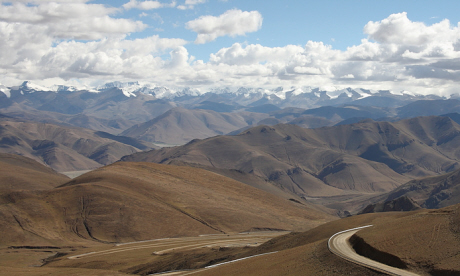
Trekking expert Robin Boustead picks the best walks, drives and cultural highs in the peaks of India, Nepal, Pakistan, Bhutan and Tibet
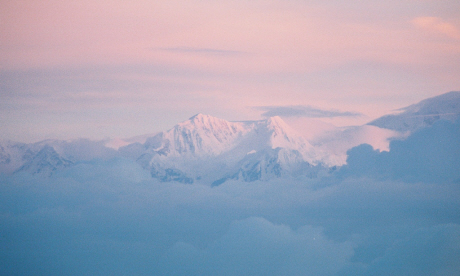 India: A range of variety
India: A range of variety
The Indian Himalaya conjures images of ancient pilgrimages and sacred sites – but it’s far more than that. The western ranges, from Kashmir to Nanda Devi, boast an incredible variety of viewpoints and communities. In the east, paradise-like Sikkim has giant butterflies and orchid forests while Arunachal Pradesh is the last of the Himalayan wild frontiers.
Sikkim is a land of dramatic scenery, delightful monasteries and hundreds of butterflies, birds and rare plants. Start in Gangtok, the state capital, an easy drive from Darjeeling and the place to learn about Lepcha culture at the Institute of Tibetology. Nearby is the lavishly decorated Rumtek Gompa monastery, home to the head of the Kagyu sect of Tibetan Buddhism.
Next, go to Martam, a small Lepcha village with great views of Kanchenjunga’s south face, and Pemayangtse (‘Perfect Sublime Lotus’) Monastery, nestled on a hilltop. From here, Darjeeling is only a day away.
How long? Eight days.
How tough? Easy, in any vehicle.
When to go? Mid-October-May, for views (although winter gets cold); Chaam, Pemayangtse’s lama-dancing festival, is held Feb/Mar.
Get started: A 15-day travel permit (extendable to 45 days in Gangtok) can be issued with your India visa. Arrange tours through agents in Gangtok or Darjeeling.
From Guwahati, in Assam, it’s 350km of winding through valleys to reach Tawang, one of the most remote towns in the Himalaya. The Dalai Lama took this route out of Tibet in 1959, believing it was the least likely place anyone would look for him.
A sprawling Buddhist monastery dominates Tawang, and snowy peaks mark the border with Tibet. At nearby Thembang, there’s a homestay programme that’s an ideal base for exploring the surrounding Monpa communities. From Tawang it takes a few days to reach the idyllic plateau of Ziro, home to the animist Apatani tribe, famed for their facial tattoos and wooden nose-plugs. The Apatani are one of the dozen-or-so tribal groups here, some only a generation away from being head-hunters.
How long? 14 days.
How tough? Easy, in a 4WD.
When to go? April-May and October-November. Dree, the major Apatani festival, is in July.
Get started: Inner Line Permits are only available through authorised agents in Delhi and Itanagar, Arunachal Pradesh’s capital. Thembang homestay can be booked through WWF-India ([email protected]).
For 130 years the Himalayan Railway – or Toy Train – has delivered respite-seeking passengers from the heat of the plains to the hilltop bazaars of Darjeeling, 86km away. The railway was Unesco-listed in 1999, and travellers taking the 2,200m ascent up into the hills today will soon discover its old world charms.
But beyond Darjeeling’s magnificently manicured tea estates, a trek through the forests of pine, conifer and rhododendron lead to a ridge that forms a natural border with Nepal and into Singalila National Park. Home to red panda, black bear and two sorts of leopard, the park is best seen when wildflowers are blooming. Circular routes visit the high point of Phalut (3,600m) for an outstanding panorama of Kanchenjunga and, to the north-west, Lhotse and Everest.
How long? Ten days (treks four to six days, plus days for train and Darjeeling).
How tough? Easy, though slippery during the monsoon.
When to go? Wildflowers are best March-May and October; the best views are November-January.
Get started: Trekking tours can be organised in Darjeeling. New Jalpaiguri station, for the Toy Train, is on the main Kolkata-Delhi line; see www.dhrs.org.
The Kuari Pass is an iconic Himalayan trek. Head up to Joshimath and then to the trailhead at Auli where the mountain vista begins immediately. Nanda Devi rises to the south-east as more and more peaks form a 270° panorama around the Kuari Pass.
The views continue for the next few days as you descend into the Brithi Valley via some surprisingly untouched villages. The trek ends at Ghat, a day drive away from the traveller’s magnet of Rishikesh.
How long? A seven- to eight-day trek from Haridwar or Rishikesh.
How tough? Moderate.
When to go? Trails are open June-October; the best views are from mid-September.
Get started: Agents in Haridwar, Rishikesh and Joshimath can organise permits and crew but expect to pay some ‘along the trail’ fees to local communities. Regular train services link Delhi to Haridwar (five hours).
This paved road and dirt track 4WD loop blends mountain vistas with famous travel spots. Shimla is an ideal start point; head from here up the lush lower valleys of the Sutlej River. You’re following National Highway 22, the Hindustan-Tibet Highway, brainchild of Lord Dalhousie in the 1850s, though never finished.
Near the Tibet border, the NH22 ends and 4WD tracks get rough as you wind through the Spiti Valley’s arid, treeless landscape. To get back to forests and cultivation in Kullu, cross the Rohtang Pass to Manali. From there it feels like a long downhill on NH21 and 20 to Dharamsala and McCleodganj, where idyllic walks are a suitable reward for finishing.
How long? 15-20 days.
How tough? Some difficult off-roading.
When to go? July-September, for the lowest chance of snow blocking passes.
Get started: Tours can be organised in Shimla, Manali and through a few 4WD clubs in major cities.
Ladakh (Little Tibet) is a place where chocolate-brown hills seem to liquefy beneath azure skies – and as if to contrast, locals wear a kaleidoscope of colours at festival time. Consequently, the Markha Valley & Hemis Festival trek is perhaps the most popular in the Indian Himalaya. A circuit via the Ganda La takes a week.
From Leh, the Markha Valley lies south, within Hemis National Park: among other endangered species, this is home to snow leopard. Hemis Monastery is the largest in Ladakh and said to be 1,000 years old. When the cymbals clang and the Tibetan horns reverberate you can feel time ebb away.
How long? Ten days, from Leh (with festival).
How tough? Moderate-difficult, with two passes at nearly 5,000m.
When to go? The Hemis Festival is June/July; trails remain open to mid-October.
Get started: Most trekking companies offer this trek. There are regular flights between Leh and Delhi (one hour 15 mins).
Kashmir’s Swiss-style peaks and woodland glades make the trail to Mt Harimukh one of the best short treks in the Himalaya. Start at Sonamarg, scale a series of alpine ridges, and then the views and flower displays begin.
Trekking doesn’t get much better than the fourth day, when you cross sublime meadows to Megandob camp, high above the Vale of Kashmir. The pilgrimage peak, Mt Harimukh, dominates your fifth day before the descent back to your houseboat.
How long? Five to seven days trekking.
How tough? Easy, if not rushed.
When to go? May-October.
Get started: Check the security situation: see www.fco.gov.uk or www.kashmirlive.com. Houseboats on Dal or Nagin Lake cost £10-70 per night (discounts for longer stays).
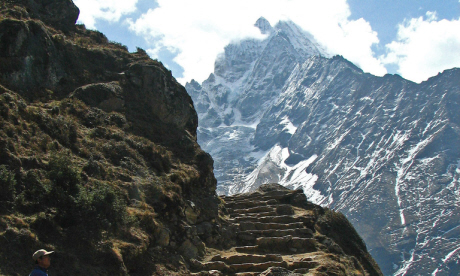 Nepal: The king of the Himalaya
Nepal: The king of the HimalayaNepal dominates Himalaya adventure – more travellers come here by far than the rest of the Himalaya put together. The reasons are simple: every one of its stunning mountain ranges is open for trekkers, there’s over 20 distinct ethnic mountain groups, and there’s an amazing variety of activities, from long walks to wild rafting.
Designed to link every range in Nepal, the Great Himalaya Trail (GHT) is a track network across the whole country, from Kanchenjunga in the east to Humla and Darchula in the west, and includes Everest, Annapurna and Langtang as well as some regions few have ever visited.
It’s broken down into sections that can be completed over a series of years; you can choose how hard and how far you’d like to trek. It’s possible to trek a GHT High Route in two- to four-week sections, or in a marathon 160 days. There’s also a 120-day village-to-village GHT Cultural Trail that can be broken down into sections of one to three weeks.
How long? Five to 160 days.
How tough? From easy to very difficult.
When to go? It’s always the right time to visit somewhere in Nepal.
Get started: See www.greathimalayatrail.com for trail ideas, tips and planning tools.
Mountain-bike between the seven World Heritage sights in the Kathmandu Valley to avoid traffic delays and explore the back lanes tourists rarely see. The furthest site is the Vishnu-dedicated Changu Narayan Temple, a 30-minute ride from the must-see city of Bhaktapur.
The Buddhist sites of Swayambunath (the Monkey Temple) and Boudhanath are easily reached on backroads, as are the burning ghats at Pashupatinath, the valley’s all-day open-air crematorium.
How long? One to seven days.
How tough? Easy within the valley; it’s tougher crossing the surrounding rim of hills.
When to go? October-December, when air quality is best.
Get started: Himalayan Map House publishes a map of cycle routes in the valley (available from good map/bookshops worldwide) or organise a trip through a local cycle-tour operator.
Lying upon the Plain of Aspirations, Lo Manthang is a superb medieval mud-walled city. Locals here tend to avoid walking, preferring instead to feel the wind in their hair as they gallop across the undulating hills of Mustang – sharing their perspective from the saddle is a wonderful way to explore this remote kingdom.
Aside from the 1,000-year-old monastery at Lo Gekar, the troglodyte city at Drakmar and the imposing monasteries of Lo Manthang, the highlight is the Teeji (Tiji) festival, an enthralling combination of tradition and pantomime.
How long? Permits for Mustang start at ten days and can be extended; add four days to transfer to/from Pokhara.
How tough? Easy; take an inflatable cushion for the hard saddles if you’re not a regular horserider.
When to go? Mustang is open for much of the year; Teeji is held April/May.
Get started: There are multiple daily flights between Kathmandu and Pokhara, where you need to overnight. Book the first flight the next morning from Pokhara to Jomsom.
Phoksundo Lake, between the ancient regions of Upper and Lower Dolpo, is possibly the most beautiful place in the entire Himalaya.
A rugged trail winds around the edge and offers reflective views; to the north is Crystal Mountain, Shey Gompa and perhaps the best chance you’ll ever have of spotting a snow leopard.
How long? Upper and Lower Dolpo circuit treks take 25 days; Phoksundo can be reached on a Lower Dolpo trek of 14 days.
How tough? 25-30 day Upper Dolpo circuit trails are moderate/difficult; shorter eight-day Juphal-Phoksundo trips are easy.
When to go? High passes are open May-October; you can visit Phoksundo almost year round if Juphal airstrip is open.
Get started: There are daily flights from Kathmandu to Juphal via Nepalgunj; you’ll have to overnight on the outbound leg. Always book the first available flight to/from Juphal – weather delays are common.
Much of far west Nepal is far off the beaten track, so rafting is a great way to explore and spot the best array of bird and animal life in the country.
The Karnali is the country’s longest river: the upper reaches are an easygoing intro before the main event – a three-day rollercoaster of Grade IV to V rapids. It’s then a tranquil float down to Bardia National Park, where Bengal tiger, elephant and rhino still roam in good numbers.
How long? Nine days, plus time in Bardia.
How tough? Moderate to difficult, depending on water flows; some experience needed.
When to go? October-May.
Get started: Make sure your rafting operator is fully accredited with the Nepal Association of Rafting Agents. Trips run from Kathmandu, Pokhara or Nepalgunj.

For those who’ve been to Pakistan, the recent decline in tourism is heartbreaking. Much-maligned and little understood, this corner of the Himalaya challenges popular perceptions. The hospitality and mind-blowing mountain views will live with you forever, though checking current travel warnings is key.
The Hunza Valley, dominated by 7,800m Rakaposhi, is one of the most neck-twisting areas on the planet: mountaineer Eric Shipton once described these environs as ‘the ultimate manifestation of mountain grandeur’.
Take in Karimabad’s Baltit Fort, then stroll to older sister fort, Altit, an easy day walk and a warm-up for the longer six-hour hike to the Ultar pastures, where a steep gully trail leads to the local king’s grazing land and views of Bulbuli’s Peak (or Lady’s Finger). If you’ve time, visit Passu, 56km up the road, to marvel at the chaos the Karakorams can do to glaciers.
How long? Five days if flying in.
How tough? Easy to moderate, depending on which route you take.
When to go? October-March is dry with good views, but winters are freezing.
Get started: Daily flights link Islamabad to Gilgit, from where Hunza is a three-hour drive along the Karakoram Highway. Islamabad-Hunza is a 20-hour, 700km bus ride.
One of the Himalaya’s toughest treks, the trail to the base of the world’s second-highest peak is inspiring and challenging. Beginning in Skardu, ascend the 62km Baltoro Glacier, which lies in an avenue of increasingly dramatic peaks, to reach Concordia, the confluence of the Baltoro and the Godwin-Austen Glaciers.
The view from nearby Gondogoro La pass is one of the finest, boasting a panorama of more 8,000m peaks than any other – K2, Broad Peak, the Gasherbrums. Once over the pass, descend the Hushe Valley, an appropriate finale of picturesque and enchanting Baltistani hospitality.
How long? 21 days from Islamabad.
How tough? Very difficult, involving some mountaineering skills.
When to go? July-mid-September, although storms can close the pass for days at any time.
Get started: For information about weather in Concordia, see www.expeditionweather.info. Trek with a respected operator as there are many logistical challenges.
Chitral, isolated by high passes that close the valley for half the year, is home to the Kalasha people who, with their blue eyes and red hair, are said to be descendants of Alexander the Great’s army.
To the north is the approach to the Shandur Pass, home to one of the highest competitions on earth: a polo tournament between Chitral and neighbouring Gilgit. It’s a wild event, lasting three days and accompanied by folk music and dancing before the people pack up and leave the mountains to return to their reflection in Shandur Lake.
How long? 14 days by jeep from Islamabad.
How tough? Easy off-road driving.
When to go? The Shandur Polo tournament is in July; the passes are open June-October.
Get started: Minibus services connect Chitral and Gilgit but it’s recommended you organise a jeep safari from a reputable travel company. For security reasons plan a return trip to Gilgit, rather than driving through Dir and Swat districts.
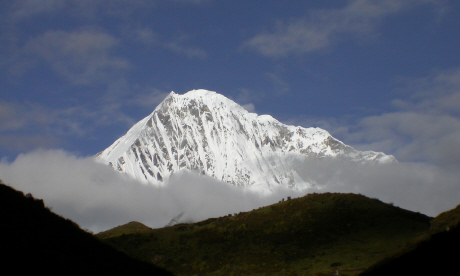 Bhutan: Pristine and serene
Bhutan: Pristine and sereneDruk Yul, the ‘Land of the Thunder Dragon’, offers an experience like nowhere else. This is where tranquillity and natural beauty combine to make what many consider to be trekking perfection. Devoutly Buddhist, Bhutan is almost all national park, a place where humans live sympathetically with nature.
There are dozens of trails across Bhutan, but the longest is the Snowman Trek. Not one formal route, it’s a network of trails to and from Lunana, Bhutan’s most remote district, running up to a string of 7,000m peaks that define the border with Tibet.
Many itineraries begin with the Jhomolhari Trail as a warm up; the other option is to begin in Gasa. Either way, aim for the village of Laya, said to be home to the most beautiful women in Bhutan; Lunana, home to Bhutan’s strongest men, is a week’s trek from there.
How long? 25 days, longer with sightseeing around Paro, Thimphu and Punakha.
How tough? Moderate/difficult, depending on the mud.
When to go? May-June and October-November are the clearest months.
Get started: Independent travel is not permitted in Bhutan; see www.tourism.gov.bt. Even trekkers must pay the minimum US$200 per day fee, but this includes all arrangements.
Bhutan’s Druk Path, a five-day trek from Paro to Thimphu, mixes mountain views, a remote monastery, a ridge-top dzong (fort) and some of Bhutan’s signature pristine forests. And, given its relatively short length, it’s ideal to combine with a cultural tour – time your trip to coincide with a regional tsechu, festivals of up to ten days that include masked dancing and archery contests. Also squeeze in a day-trip to Takseng Gompa (Tiger’s Nest Monastery), perhaps the world’s most dramatically perched building.
How long? From ten days.
How tough? Easy to moderate.
When to go? October-November have the clearest weather; the rhododendrons are in bloom March-May.
Get started: Drukair flies from India, Nepal and Bangkok to Paro. For a festival calendar, see www.bhutanfestival.com.
The lowest population density and highest average forest cover along the Himalaya mean you’re unlikely to meet a soul on the trail from Bumthang to Tashi Yangtse. Start at Ugyen Choeling Palace (now a museum/guesthouse), and hike up two ridges boasting orchid-draped rhododendron forest which is said to be the home of the yeti. One of the sleepiest places on earth, Tashi Yangtse was saved from an evil demon by a princess who sacrificed herself, and is the end of a sublime trail.
How long? 14 days trekking.
How tough? Moderate to difficult – some steep sections.
When to go? April-May for rhododendrons.
Get started: Bumthang is a two-day drive from both Paro, to the west, or Samdrup Jongkhar, on the India border (a three-hour drive from Guwahati, Assam).
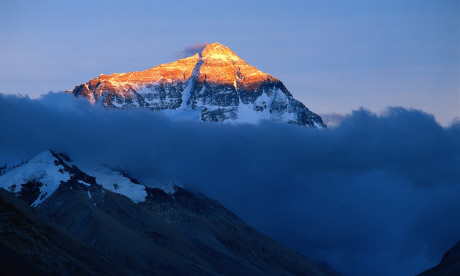
The Roof of the World lies to the north of the Great Himalaya Range and offers unparalleled access to regions that would take weeks to reach from the south. Lhasa, the Tibetan capital, remains a huge draw, but with permits in place you can get out into truly wild and challenging mountains.
Simply, one of the greatest trans-Himalayan trips. In Lhasa visit the Potala Palace, Jokhang Temple and Barkhor market before driving across a lunar-like landscape via Gyantse and Shigatse to Darchen – and the foot of Mt Kailash. Hindus and Buddhists believe Kailash is the centre of the spiritual universe; a kora (circumambulation) is said to purify the soul. Once you’ve performed your three-day kora, cross the Nepal border at Hilsa and enjoy an eight-day trek through the Limi Valley before flying from Simikot to Kathmandu.
How long? 20 days (three days in Lhasa; nine days for Kailash and kora; eight days to Kathmandu).
How tough? Moderate; involves passes over 5,000m.
When to go? May-September; Tibet’s Saga Dawa festival is held May/June.
Get started: There are regular daily flights from across China to Lhasa as well as from Kathmandu. Tours and permits are most easily organised from Kathmandu but you’ll need to travel as a group to cross the border into Tibet.
The east, or Kangshung, face is Mt Everest’s most spectacular aspect; getting there is often rated as one of the world’s top treks. From the arid expanse of the Tibetan plateau to fragile subtropical forests, this trek is remote, wild and challenging – a true homage to the Himalaya.
Drive from Lhasa via Shigatse to the road-head at Kharta. You soon leave the arid plateau and enter a borderland between remote valleys and the icy bulk of Makalu and Everest. Trails through rhododendron, birch and juniper forest make you feel as if you’ve entered a secret world. The return route crosses a different pass for a variety of perspectives, en route to Kathmandu.
How long? 20 days.
How tough? Moderate/difficult, depending on the trail conditions.
When to go? April-May or October-November.
Get started: For information about Mt Everest see www.everestnews.com. Except for your Chinese visa, all Tibet permits and Alien Travel permits have to be organised through an official travel agent in Lhasa. Most treks run from Kathmandu as a group in conjunction with a Chinese agent.
Traditional home to the Dalai Lama and the kings of Tibet, Lhasa is full of amazing legends. Take in the mighty Potala Palace and nearby Norbulingka, a great place to meet locals, before leaving the city to tour some of the most important monasteries in Tibetan Buddhism – Drepung, Sera and Ganden.
The last is an excellent starting point for a walk out of the Lhasa Valley to Tibet’s oldest monastery, Samye (four days). From here it’s a stone’s throw to Yarlung, where 1,400 years ago Songtsän Gampo unified the roof of the world; it’s still revered as the cradle of Tibetan culture.
How long? 12 days.
How tough? Easy, once acclimatised.
When to go? May to mid-September.
Get started: See www.tibettravel.info and the China Tibet Tourism Bureau.
Robin Boustead on the Great Himalaya Trail | Interviews... More
Tips for hiking the Himalaya | Inspire me... More
Check out our Everest Base Camp guide for more tips and advice | Plan a trip... More
Take a look at our walking and trekking guide for more hikes | Plan a trip... More
Healthy hiking: Pre-trek preparation is key | Health advice... More